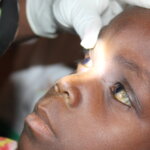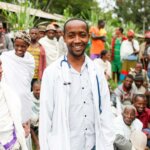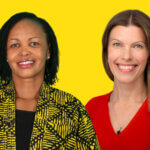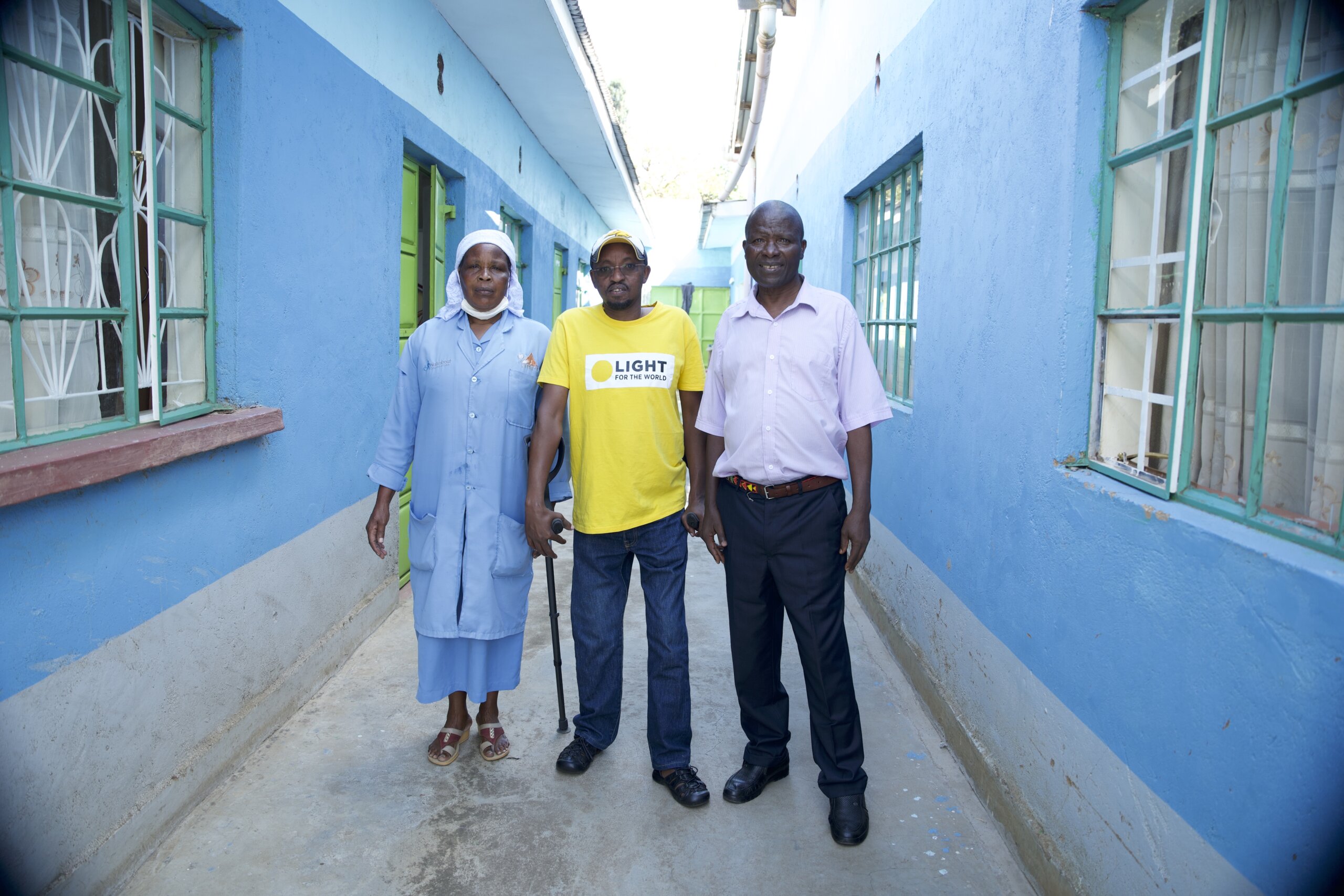- General
World Sight Day is a time in the year when the whole world is encouraged to focus on eye health – and that means everybody, including governments and donors.
On World Sight Day, heads of government and big donors must take the lead to ensure that everyone is provided affordable and inclusive access to eye care, no matter who or where they are.
This year, the International Agency for the Prevention of Blindness’ (IAPB’s) #LoveYourEyes campaign – which Light for the World supports – encourages everyone to take the pledge and get their eyes checked.
Governments and donors, too, can take a pause to check that their own vision is one which promotes and protects eye care for everyone, especially people who are already marginalised by poverty, disability or other aspects of their identity.
Our goal is for governments and private actors to realize the positive development potential that can be unlocked for a society if eye health services are readily available and affordable within the public and private health system.
Marion Lieser, CEO Light for the World
Globally, 1.1 billion people live with vision loss, and 43 million people are blind, yet 90% of vision loss is preventable or treatable. At Light for the World, our mission is to leave no one behind when it comes to eye care and more generally, disability and inclusion.
We’ve been promoting eye health since 1988 and have learned a lot through our innovative and ground-breaking approaches. Here are four ways we think governments and donors can sharpen their vision and support us in our effort to tackle this global health deficit.
1. Prioritise eye health and accelerate progress on the sustainable development goals.
If world leaders and donors commit to supporting eye health globally, they’ll open opportunities for the 1.1 billion people currently living with vision loss. Simply put, this means children who would have been excluded from education because of impaired vision can actually access learning. And it means working age adults with disabilities can get and keep a job.
One example of the many programmes we run to support eye health is our work tackling Neglected Tropical Diseases (NTDs). Through this, we focus on treating, preventing and controlling infection, and raising awareness in countries like Ethiopia. In 2020 alone, we distributed 4.7 million doses of medication for NTDs like river blindness. Increased access to eye care in low- and middle-income countries can increase household spending per capita by 88% and the odds of getting paid employment by 10%, which then reduces poverty and hunger levels – key to meeting the sustainable development goals. It’s a win-win situation that benefits people and the economy. And on top of all this, improving eye health is an incredibly cost-effective way to achieve these long-term outcomes – that’s why we’re also asking for eye health to be explicitly included in the global goals.
2. Invest in trained, local eye health specialists.
At Light for the World, we take the long view. We provide scholarships for ophthalmology students, subspecialisation training for ophthalmologists and nurses, and offer equipment and medicines so that trained medical staff can work effectively with appropriate infrastructure in hospitals.
Our interventions are integrated into the existing health system. We work hand in hand with the Ministries of Health and Education in our focus countries – Burkina Faso, Ethiopia and Uganda among them – to ensure sustainability. We do not travel to a country, do a few treatments, and leave again. In the future, we want people to still have access to eye health services. Investment in programmes like these will reap rewards for years to come.
3. Enable free, high quality cataract surgery.
Cataract is the principal cause of preventable blindness in children in low-income countries. It’s also the second largest cause of vision loss worldwide. It can take just 15 minutes to remove cataracts surgically.
In 2021, we worked with our partners to carry out over 28,000 cataract operations, restoring eyesight for individuals like Neimata and Aboubacar, who live in Burkina Faso. Their mum, Oumou, told us: “I was really desperate because of my children who had cataracts. And what saddened me the most was that I knew that we would not have had the money anytime soon to allow us to have our children operated on. Fortunately, we met the path of Light for the World who helped us to have my children operated on. I’m very happy and relieved. They were going to be able to be autonomous, especially Neimata.”
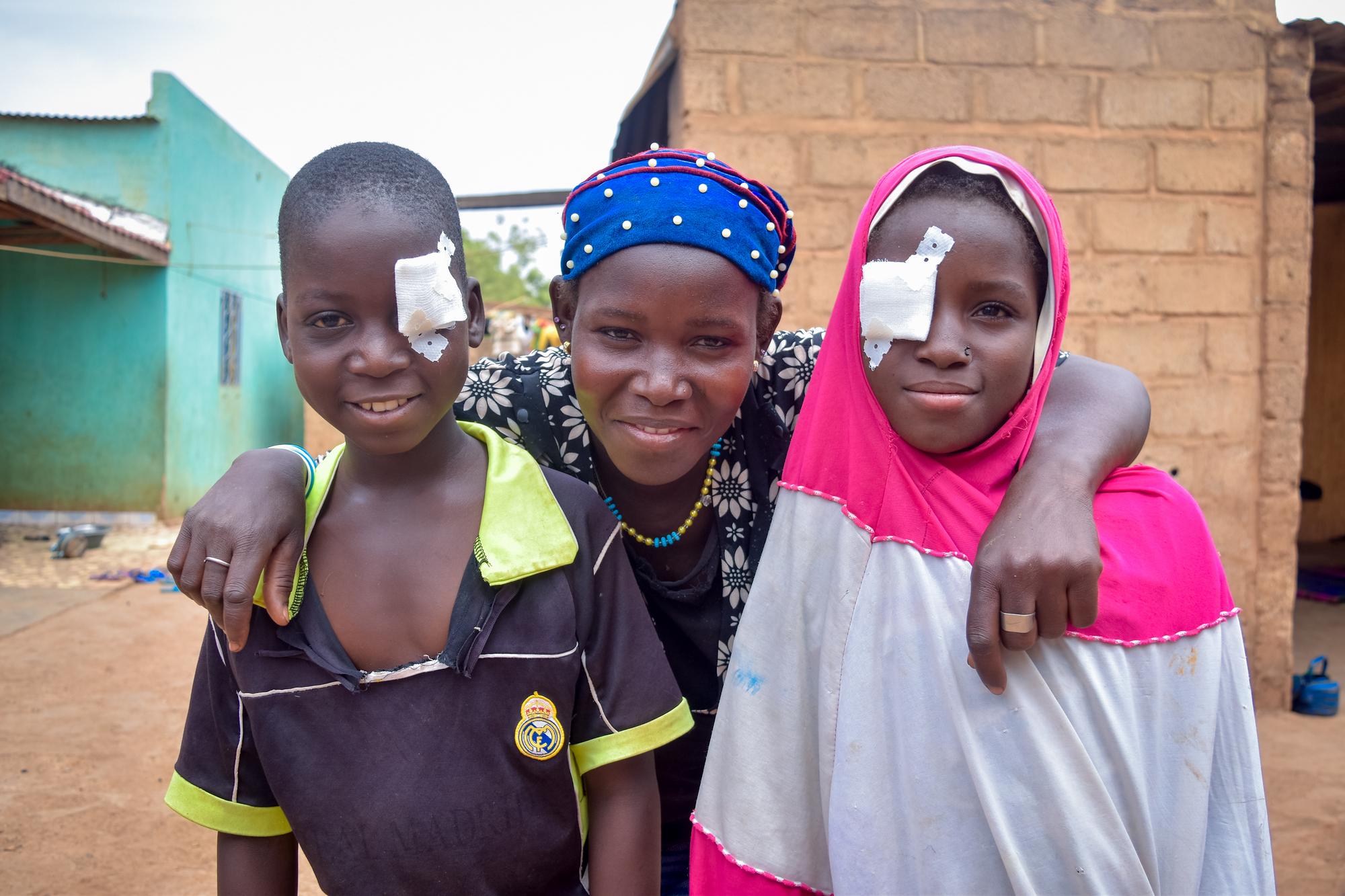
To guarantee everyone has access, countries should include cataract surgery in their basic health insurance packages. Ethiopia introduced this in 2019 with excellent results: annual cataract surgeries rose from 48,398 in 2012 to around 70,000 in 2020. If other countries did the same, they’d get that much closer to meeting the World Health Assembly’s ambitious target of increasing the provision of cataract surgery by 30% by 2030. Free high quality cataract surgery can increase household income – 46% of households moved up an income bracket following this surgery, demonstrating a hugely beneficial knock-on impact.
4. Provide free eye glasses to children who need them.
Children with vision loss are 2-5 times less likely to be in formal education in low- and middle-income countries. For those who do make it to school, glasses can reduce the odds of them failing a class by 44%. It should be no surprise, then, that the World Health Assembly has challenged governments to increase by 40% their provision of corrective eye glasses – by 2030.
At Light for the World, we’ve been actively involved in targeting the prevention and control of childhood blindness, first through a pilot project in Uganda providing eyeglasses to schoolchildren with impaired vision. Recognised as a model of best practice by the International Council of Ophthalmologists, this initiative has opened the door to our current programme, 1, 2, 3 I can see!, which runs in Burkina Faso, Ethiopia, Mozambique and Uganda. It takes a holistic approach, wrapping together school-based screening for eye problems, diagnosis, prevention, the provision of eye glasses, training professionals, strengthening and expanding existing health structures, pushing for basic health insurance to include spectacles, and much more.
Funding innovative projects like these is a fantastic way to secure futures for some of the world’s most marginalised people, which in turn drives down poverty while protecting eye health. They’re also efficient ways for governments and donors to meet their targets under the sustainable development goals – a massive motivator, if any were needed, this World Sight Day.
World Sight Day is celebrated annually on the second Thursday of October. This year it falls on 13 October.
